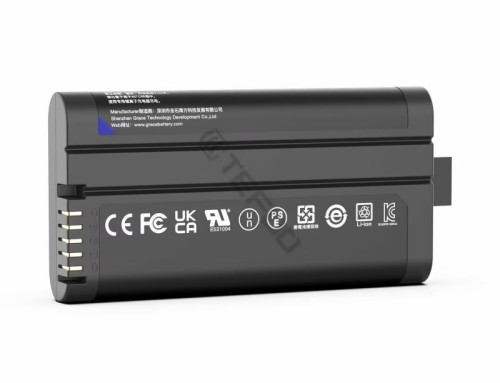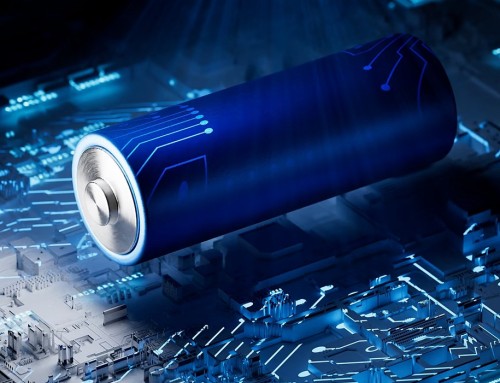How To Select the Right Lithium Ion Cell Pack for Medical-Grade Devices?
1. Introduction: Why Battery Selection Matters in Medical Devices
As medical devices evolve toward portability, continuous monitoring, and intelligent functionality, the power system behind them has become more critical than ever. From handheld ultrasound scanners to infusion pumps, patient monitors, and wearable diagnostic tools, most modern devices rely on lithium-ion (Li-ion) cell packs as their primary energy source.
However, selecting a lithium ion battery pack for a medical device is not the same as selecting one for consumer electronics. Medical-grade devices require:
- Higher reliability and predictable performance
- Stricter safety standards and regulatory compliance
- Accurate state-of-charge (SoC) and state-of-health (SoH) reporting
- Longer lifecycle and consistency across production batches
- Traceability and supplier stability over many years
A wrong battery decision can lead to field failures, safety risks, certification delays, and complete redesigns. This article provides a step-by-step engineering guide to help you choose the right lithium ion cell pack or smart li-polymer battery pack for medical-grade devices.
2. Understanding Lithium Ion Cell Packs: Core Structure and Terminology
Before selecting a battery pack, it’s essential to understand the components and design features that define it.
2.1 What Is a Lithium Ion Cell Pack?
A lithium ion cell pack typically includes:
- Lithium ion cells (pouch, cylindrical, or prismatic)
- PCM or BMS (Protection Circuit Module or Battery Management System)
- Thermal protection (NTC sensors, thermal cutoffs, or fuses)
- Mechanical housing / soft pack pouch
- Communication interface (SMBus, I2C, UART, CAN, depending on smart battery requirements)
Depending on the design, it may be a simple lithium ion cell pack or a fully integrated smart li-ion battery pack with advanced fuel-gauge and communication capabilities.
2.2 Medical Devices Commonly Using Li-Ion Packs
- Portable diagnostic analyzers
- Blood glucose and vital-sign monitors
- Portable ventilators
- Infusion pumps and syringe pumps
- Handheld imaging devices (e.g., ultrasound probes)
- Surgical power tools
- Smart wearable medical devices
- Laboratory instruments requiring backup power
Each application has different electrical loads, environmental requirements, and safety constraints — making battery pack selection highly application-specific.
3. Key Selection Criteria for Medical-Grade Li-Ion Cell Packs
This section is the core decision-making framework for engineers and product managers.
3.1 Safety Requirements (Top Priority for Medical Use)
Medical devices must comply with strict international safety standards:
- IEC 62133 (global battery safety requirement)
- UL 2054 (U.S. household & commercial battery safety)
- UN38.3 (transport safety)
- ISO 13485 traceability (for suppliers)
Look for cell packs with:
- Overcharge protection
- Overdischarge protection
- Overcurrent and short-circuit protection
- Thermal protection and runaway mitigation
- Redundant safety components (dual fuses, multiple NTC sensors)
Devices used close to patients or in critical care require the highest level of protection.
3.2 Reliability and Cycle Life
Medical devices are expected to perform reliably over years. Engineers should consider:
- Cycle life (number of charge/discharge cycles before capacity drop)
- Capacity retention (e.g., >80% after 300–500 cycles)
- Self-discharge rate
- Consistency between cells (cell matching / cell binning)
Unlike consumer devices, medical equipment cannot tolerate sudden degradation or unpredictable performance.
3.3 Power Requirements: Discharge Rate & Load Profile
Evaluate your device’s power behavior:
- Peak current during wireless transmission
- Continuous current during measurement and processing
- Motor-driven loads requiring high surge currents
- Pulsed loads and voltage stability requirements
High-power devices benefit from:
- High-rate lithium ion cell packs
- Low internal resistance
- Robust thermal design
3.4 Thermal Behavior and Cooling Requirements
Medical devices often operate in confined, sealed enclosures with little airflow. Therefore, thermal stability is essential:
- Evaluate cell chemistry (e.g., LFP vs NMC)
- Consider thicker aluminum layers for heat dissipation
- Use multiple NTC sensors for safety
- Select soft-pack or flat lithium ion battery designs for better thermal spread
Flat lithium batteries are especially useful in compact medical housings.
3.5 Energy Density vs. Safety Trade-off
High energy density is attractive, but not always ideal.
- NMC / NCA = Higher energy density, suitable for portable imaging
- LFP = Highest safety, longer cycle life, lower risk of thermal runaway
- LCO = High energy but less favored due to safety concerns
Engineers must balance weight, size, runtime, and medical-grade safety.
3.6 Form Factor and Customization Needs
Modern medical devices increasingly require:
- Ultra-thin profiles
- Lightweight power sources
- Custom shapes (L-shaped, curved, multi-layer)
- Flexible assembly constraints
Thus, flat lithium ion battery or li-polymer packs are becoming mainstream.
4. Choosing the Right Cell Chemistry for Medical Applications
4.1 Comparison of Common Chemistries
|
Chemistry |
Pros |
Cons |
Best Applications |
|
LFP |
Ultra-safe, long cycle life |
Lower energy density |
Pumps, monitors, mid-power instruments |
|
NMC |
Balanced performance |
Moderate safety |
Imaging, diagnostics |
|
NCA |
High energy |
Less stable |
High-drain tools |
|
LCO |
High energy density |
Lower safety |
Small portable diagnostic devices |
4.2 Environmental & Regulatory Considerations
- Shelf life and long-term storage
- High-temperature sterilization or cleaning compatibility
- Transportation compliance (UN38.3 impact testing)
5. Smart Battery Requirements: Why Medical Devices Need Intelligent BMS
A smart li-ion battery pack is more than a power source — it’s an intelligent subsystem.
5.1 Why Smart BMS Is Essential
- Accurate SoC (state-of-charge)
- SoH (state-of-health) for predictive maintenance
- Fault detection and logging
- Balance charging across multi-cell packs
- Communication through SMBus / I2C / UART
Smart features significantly reduce field failures.
5.2 Safety Algorithms
- Over-temperature protection
- Charge/discharge current control
- Cell balancing
- Event logging for traceability
5.3 Redundancy
- Dual NTC design
- Dual MOSFETs
- Multi-layer protection (hardware + firmware)
This is why many medical OEMs require a smart li polymer battery pack over a standard pack.
6. Charging Compatibility & System Integration
6.1 Selecting the Correct Li Ion Battery Pack Charger
Look for:
- CC/CV charging method
- Temperature compensation
- Medical-grade isolation certification (IEC 60601-1)
- Communication signals for synchronized charging
6.2 Charger–BMS Interaction
Smart batteries communicate:
- Battery temperature
- Charging status
- Full/empty state
- Fault conditions
Ensuring compatibility prevents overcharge or overheating events.
6.3 Common Integration Mistakes to Avoid
- Using non-medical-grade chargers
- Mismatched voltage between charger and pack
- Insufficient thermal considerations
- Grounding mistakes creating noise in sensing circuits
7. Supplier Evaluation: Ensuring Medical-Grade Quality
Choosing the right lithium ion battery supplier is as important as selecting the right battery.
7.1 Indicators of a Medical-Ready Battery Supplier
- ISO 13485 compliance
- UL-certified manufacturing lines
- Full traceability system
- Years of experience in medical power systems
7.2 Production Quality Control
- Cell binning & matching
- Automated welding and assembly
- Cycle testing
- OCV/IR measurement for every cell
7.3 Long-Term Supply Stability
Medical devices have long lifecycles (7–12 years), so ensure:
- Long-term availability of raw cells
- Stable manufacturing capacity
- Strong engineering support
8. Conclusion: Engineering Best Practices for Selecting Medical-Grade Lithium Ion Cell Packs
To ensure safety, reliability, and regulatory compliance, medical device engineers should:
- Prioritize safety standards and smart BMS integration
- Select appropriate cell chemistry based on device requirements
- Ensure thermal stability and structural fit
- Use medically certified chargers compatible with the Li-ion pack
- Work with certified, reliable suppliers offering traceability and long-term support
Choosing the right lithium ion cell pack is not only a technical decision — it’s a foundational reliability decision that directly influences patient safety and device performance.
A well-designed smart li-polymer battery pack or flat lithium ion battery can greatly enhance device reliability, reduce maintenance costs, and ensure consistent performance across the entire product lifecycle.




